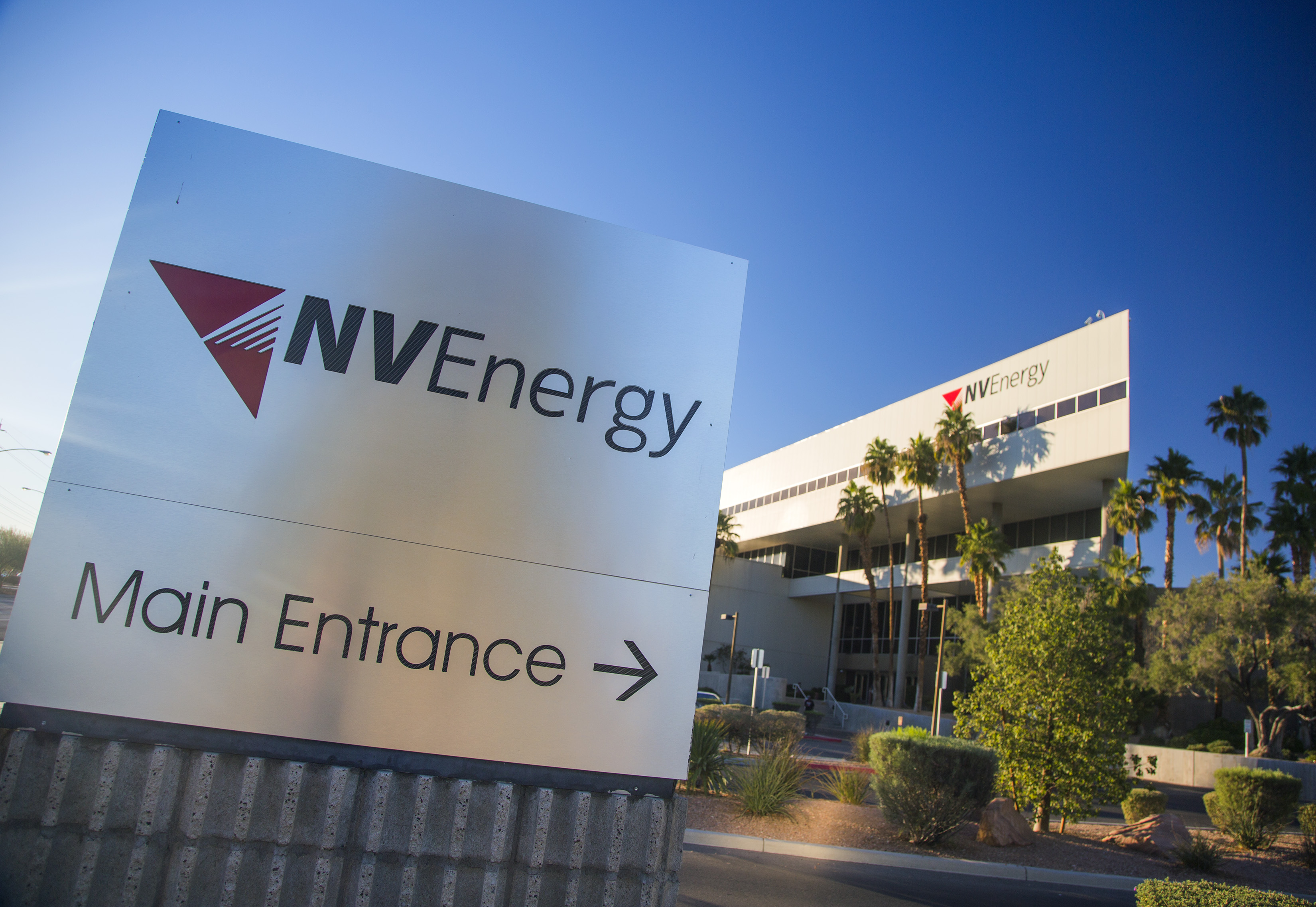Bill could substantially change electric rate formula for NV Energy

Nevada’s system for setting and determining how much people pay for electricity could be substantially overhauled under an amended bill sponsored by Democratic Sen. Chris Brooks.
The amendment to SB300, which was voted out of the Senate Committee on Growth and Infrastructure unanimously on Thursday, replaces original language requiring utilities to share profits with customers if they report earnings over their authorized rate of return.
Instead, the new bill would authorize the Public Utilities Commission to adopt regulations allowing electric utilities — namely NV Energy — to adopt “alternative” ratemaking mechanisms and possibly extend the statutorily required three-year period between general rate cases. Although the proposed alternative processes wouldn’t directly involve individual electric customers, an overhaul of the ratemaking process could have significant effects on not only the financial health of NV Energy but also on how prices for electric bills are determined.
Historically in Nevada and other states with electric utilities, rates are set out in periodically scheduled rate cases based on a utility’s cost of service, essentially a formula that spits out rates based on how much money a utility needs to cover its costs — including taxes, operations and depreciation of assets like power plants — plus an authorized rate of return for shareholders (set at 9.7 percent in 2017 for NV Energy). Rate cases in Nevada operate off of three-year cycles; the most recent rate case was approved in December 2017 and decreased residential electric rates.
But a handful of states — including Pennsylvania and Texas — have either studied or adopted “alternative” ratemaking mechanisms, which include a wide variety of procedural tools and changes designed to improve the “mixed incentives” that utilities face under the normal ratemaking process. Under the typical ratemaking process (a costly and lengthy process that takes several months), utilities can face significant regulatory “lag” that drifts their actual earnings either above or below what is authorized by regulators, leading the utility to operate at a loss — or to customers paying more for electricity than they should.
Under the amended SB300, the Public Utilities Commission would be required to create regulations setting a framework for a wide variety of alternative ratemaking tools, tied to nine public policy goals identified by the Legislature including rate stability, development of renewable energy, electrical grid efficiency and security and ensuring customers benefit from lower administrative costs.
Once regulations are in place, the bill lays out a process wherein electric utilities (NV Energy) could file an application for an alternative ratemaking plan with a requirement for the commission to approve the plan within 210 days. Several factors would be required for adoption including requiring the commission to find that the plan is in the public interest, that it keeps rates “reasonable and stable” for fully bundled electric customers and that it meets the nine policy goals outlined by the Legislature.
If such a plan is approved, the bill would allow for removal of the three-year cycle of rate cases and instead build in certain conditions or a mechanism to bring forth a rate case if the required conditions for the plan are no longer being met. It also recommends, but doesn’t require, a plan to include an earnings sharing mechanism with consumers as well as allowing either customers or the commission to initiate a complaint or investigation.
The measure does not require any certain alternative ratemaking mechanisms be adopted, but does lay out some examples used in other states, including:
- Performance-based rates, which are set or adjusted based on certain performance metrics such as service outages, employee safety or customer service set by a public utilities commission
- Formula rates, which use a pre-specified formula to automatically adjust rates to keep a utility’s rate of return at or near its authorized profit margins, with periodic reviews
- Multi-year rate plans, which would allow for rate cases beyond three year periods with built in rate adjustments based on factors such as inflation or capital investments which wouldn’t require a full rate case
- Subscription pricing, which creates a special set subscription rate for electric customers based on a fee — and can include other conditions
- An earnings sharing mechanism, which would require the utility to share earnings with customers above a specific percentage of return on equity
- A decoupling mechanism, which separates a utility’s financial performance and results from the sales of electricity — designed to encourage energy efficiency and remove incentives to increase sales
